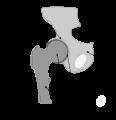
Health, 28.08.2019 06:30, adelarangelmartinez
Unlike vitamins, minerals are
a. provided by food.
b. needed in small amounts.
c. inorganic.
d. nutrients. user: which tissue is responsible for voluntary and involuntary movements?
a. muscle tissue
b. nervous tissue
c. epithelial tissue
d. connective tissue user: which types of freely movable joints are often found in areas of the body, such as the shoulders and hips, needing movement in many directions?
a. ball-and-socket joints
b.

Answers: 1
Other questions on the subject: Health

Health, 23.06.2019 02:30, nathangirnet
A24-year-old g4p2 woman at 34 weeks gestation complains of a cough and whitish sputum for the last three days. she reports that everyone in the family has been sick. she reports a high fever last night up to 102°f (38.9°c). she denies chest pain. she has a history of asthma with no previous intubations. she uses an albuterol inhaler, although she has not used it this week. vital signs are: temperature 98.6°f (37°c); respiratory rate 16/minute; pulse 94 beats/minute; blood pressure 114/78; peak expiratory flow rate 430 l/min (baseline documented in the outpatient chart = 425 l/min). on physical examination, pharyngeal mucosa is erythematous and injected. lungs are clear to auscultation. white blood cell count 8,700 mcl; arterial blood gases on room air (normal ranges in parentheses): ph 7.44 (7.36–7.44); po2 103 mm hg (> 100); pco2 26 mm hg (28–32); hco3 19 mm hg (22–26). chest x-ray is normal. what is the correct interpretation of this arterial blood gas?
Answers: 1

Health, 23.06.2019 04:00, jayv1999
The herpes viruses are important enveloped dna viruses that cause disease in vertebrates and in some invertebrates such as oysters. some of the human forms are herpes simplex virus (hsv) types i and ii, causing facial and genital lesions, and the varicella zoster virus (vsv), causing chicken pox and shingles. each of these three actively infects nervous tissue. primary infections are fairly mild, but the virus is not then cleared from the host; rather, viral genomes are maintained in cells in a latent phase. the virus can later reactivate, replicate again, and infect others. in electron micrographs of hsv infection, it can be seen that the intact virus initially reacts with cell surface proteoglycans, then with specific receptors. this is later followed by viral capsids docking with nuclear pores. afterward, the capsids go from being full to being "empty." which of the following best fits these observations? a) viral capsids are needed for the cell to become infected; only the capsids enter the nucleus. b) the viral envelope is not required for infectivity, since the envelope does not enter the nucleus. c) only the genetic material of the virus is involved in the cell's infectivity, and is injected like the genome of a phage. d) the viral envelope mediates entry into the cell, the capsid mediates entry into the nuclear membrane, and the genome is all that enters the nucleus.
Answers: 2

Health, 23.06.2019 07:00, carlosleblanc26
A41-year-old man comes to the clinic complaining of a chronic cough over the past 4 months, which has now been accompanied by haemoptysis. he denies smoking or any past medical history. on physical examination, his head and neck examination is normal. his lungs have diffuse bilateral rales. cardiac examination is normal. laboratory findings reveal na 142 meq/l, k 4.2 meq/l, cl 110 meq/l, hco3 24 meq/l, bun (blood urea nitrogen) 39 mg/dl, creatinine 2.9 mg/dl. urinalysis reveals microscopic haematuria and 4+ proteinuria. which of the following serologic blood tests would most confirm the suspected diagnosis? - anti-glomerular basement membrane antibodies- anti-mitochondrial antibodies- anti-neutrophilic antibodies- anti-parietal cell antibodies- anti-smooth muscle antibodies
Answers: 3

Health, 23.06.2019 15:10, michaelishawilliams
The benefits of cardiovascular exercise include a improved hearing b reduced depression c reduced appetite d decreased stamina
Answers: 2
Do you know the correct answer?
Unlike vitamins, minerals are
a. provided by food.
b. needed in small amounts.
...
a. provided by food.
b. needed in small amounts.
...
Questions in other subjects:

Mathematics, 29.09.2019 07:01

Social Studies, 29.09.2019 07:01

History, 29.09.2019 07:01

History, 29.09.2019 07:01


English, 29.09.2019 07:01



English, 29.09.2019 07:01







